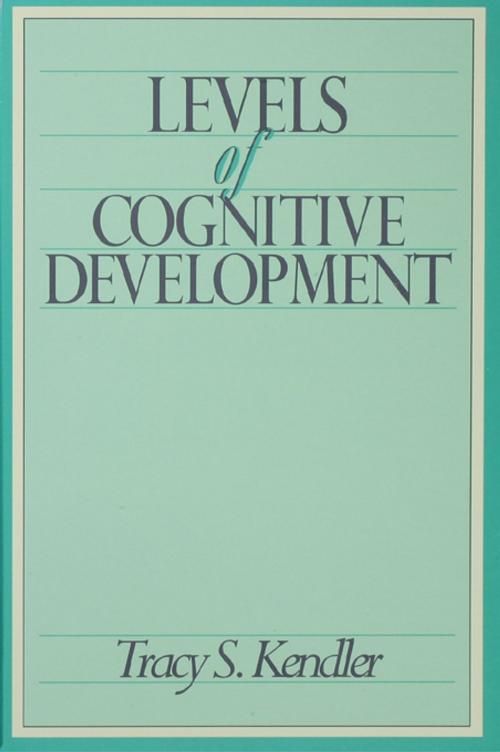Levels of Cognitive Development
Nonfiction, Health & Well Being, Psychology, Developmental Psychology| Author: | Tracy S. Kendler | ISBN: | 9781134756490 |
| Publisher: | Taylor and Francis | Publication: | June 17, 2013 |
| Imprint: | Psychology Press | Language: | English |
| Author: | Tracy S. Kendler |
| ISBN: | 9781134756490 |
| Publisher: | Taylor and Francis |
| Publication: | June 17, 2013 |
| Imprint: | Psychology Press |
| Language: | English |
The proposed levels theory presented in this book concerns some developmental changes in the capacity to selectively encode information and provide rational solutions to problems. These changes are measured by the behavior exhibited in simple discrimination-learning problems that allow both for information to be encoded either selectively or nonselectively and for solutions to be produced by associative learning or by hypothesis-testing.
The simplicity of these problems permits comparisons between infrahuman and human performance and also between a wide range of ages among humans. Human adults presented with these problems typically encode the relevant information selectively and solve the problems in a rational mode. Infrahuman animals, however, typically process the information nonselectively and solve the problems in an automatic, associative mode. How human children encode the information and solve the problems depends on their age. The youngest children -- like the infrahuman animals -- mostly encode the information nonselectively and solve the problems in the associative mode. But between early childhood and young adulthood there is a gradual, long-term, quantifiable increase in the tendency to encode the information selectively and to solve the problem by testing plausible hypotheses.
The theory explains in some detail the structure, function, development, and operation of the psychological system that produces both the ontogenetic and phylogenetic differences. This system is assumed to be differentiated into an information-processing system and an executive system analogous to the differentiation of the nervous system into afferent and efferent systems. Each of these systems is further differentiated into structural levels, with the higher level, in part, duplicating the function of the lower level, but in a more plastic, voluntary, and efficient manner. The differentiation of the information-processing and executive systems into different functional levels is presumed to have occurred sometime during the evolution of mankind with the higher level evolving later than the lower one as the central nervous system became increasing encephalized. As for human ontogeny, the higher levels are assumed to develop later and more slowly than their lower-level counterparts.
In addition to accounting for a substantial body of empirical data, the theory resolves some recurrent controversies that have bedeviled psychology since its inception as a science. It accomplishes this by showing how information can be both nonselectively and selectively encoded, how automatic associative learning and rational problem-solving can operate in harmony, and how cognitive development can be both qualitative and quantitative.
The proposed levels theory presented in this book concerns some developmental changes in the capacity to selectively encode information and provide rational solutions to problems. These changes are measured by the behavior exhibited in simple discrimination-learning problems that allow both for information to be encoded either selectively or nonselectively and for solutions to be produced by associative learning or by hypothesis-testing.
The simplicity of these problems permits comparisons between infrahuman and human performance and also between a wide range of ages among humans. Human adults presented with these problems typically encode the relevant information selectively and solve the problems in a rational mode. Infrahuman animals, however, typically process the information nonselectively and solve the problems in an automatic, associative mode. How human children encode the information and solve the problems depends on their age. The youngest children -- like the infrahuman animals -- mostly encode the information nonselectively and solve the problems in the associative mode. But between early childhood and young adulthood there is a gradual, long-term, quantifiable increase in the tendency to encode the information selectively and to solve the problem by testing plausible hypotheses.
The theory explains in some detail the structure, function, development, and operation of the psychological system that produces both the ontogenetic and phylogenetic differences. This system is assumed to be differentiated into an information-processing system and an executive system analogous to the differentiation of the nervous system into afferent and efferent systems. Each of these systems is further differentiated into structural levels, with the higher level, in part, duplicating the function of the lower level, but in a more plastic, voluntary, and efficient manner. The differentiation of the information-processing and executive systems into different functional levels is presumed to have occurred sometime during the evolution of mankind with the higher level evolving later than the lower one as the central nervous system became increasing encephalized. As for human ontogeny, the higher levels are assumed to develop later and more slowly than their lower-level counterparts.
In addition to accounting for a substantial body of empirical data, the theory resolves some recurrent controversies that have bedeviled psychology since its inception as a science. It accomplishes this by showing how information can be both nonselectively and selectively encoded, how automatic associative learning and rational problem-solving can operate in harmony, and how cognitive development can be both qualitative and quantitative.















